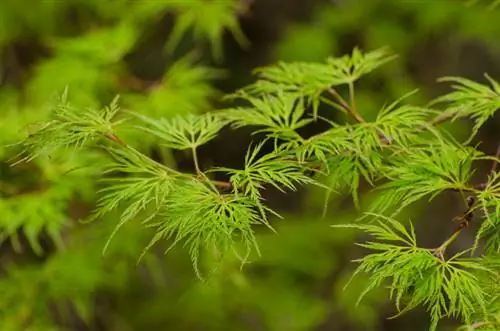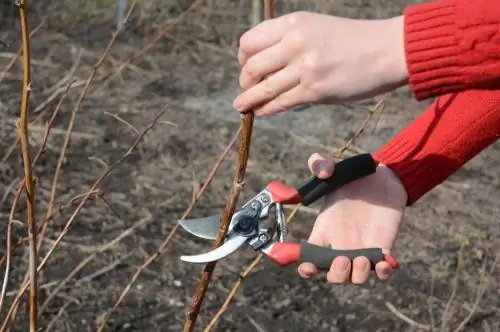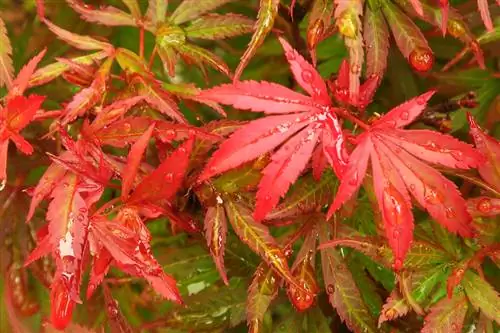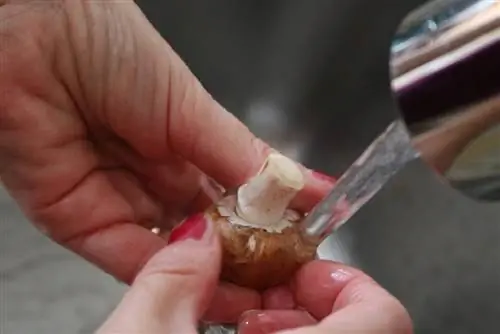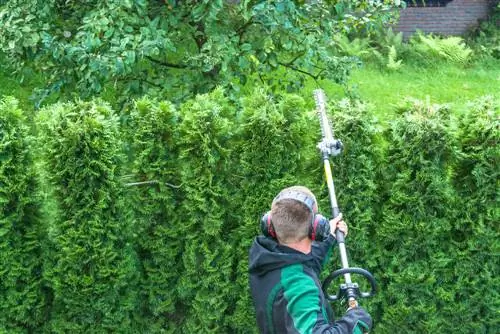- Author admin [email protected].
- Public 2023-12-16 16:46.
- Last modified 2025-01-23 11:20.
The Japanese maple is a popular, comparatively small ornamental tree for the home garden or even for keeping in pots on balconies and terraces. Only prune the distinctive deciduous tree if it is really unavoidable - the rather shrub-like tree, also known as the Japanese maple (Acer palmatum), generally tolerates pruning poorly.
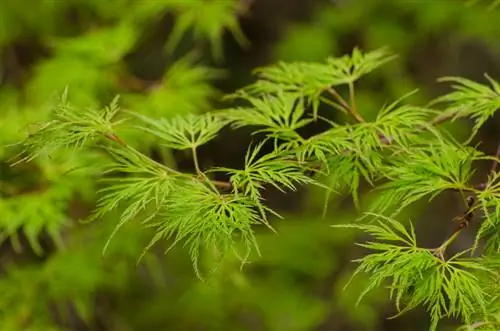
When and how should you prune a Japanese maple?
A Japanese maple should only be pruned if it is unavoidable, as it tolerates pruning poorly. Carry out necessary pruning in spring or early fall and avoid it in winter. Pay attention to hygiene and sharp tools to prevent infections.
Pruning can cause damage
Provided that the Japanese maple is in the right location and feels comfortable there, the Far Eastern deciduous tree is comparatively easy to care for: it only needs to be watered in hot and dry summer periods, only rarely fertilized and does not need to be pruned. Pruning is not only unnecessary, but in the worst case scenario it can even cause the entire tree to die. Species that remain small in particular tend to become infected with powdery mildew or other fungal diseases after such a measure. Fortunately, the Japanese maple naturally grows quite evenly and only slowly.
Carry out necessary pruning measures in spring
Sometimes, however, pruning is unavoidable, for example to remove shoots, twigs and branches that have dried up, frozen in winter or are infected with infections. Dead and diseased tree parts should best be cut back in spring or early autumn, but cutting measures in late autumn or even winter should be avoided. Trees pruned in winter are often very susceptible to fungal infections. When cutting, be careful not to cut into the living wood and do not separate the twigs and branches directly and smoothly on the trunk.
Protective measures for pruning
Adhering to certain protective measures will help you and your Japanese maple survive any pruning measures he althy and without damage. The top rule is hygiene, i.e. H. All tools used must be kept sharp and clean. Ideally, you should disinfect scissors and knives before and after treatment in order to interrupt possible routes of infection and prevent pathogens from being introduced into the tree. You should also note the following information:
- Cutting tools should always be sharp to avoid bruising.
- Larger cut surfaces should be treated with tree wax,
- this prevents the tree from bleeding.
- Avoid damaging the branch collar.
- No pruning in autumn or winter.
Tip
Drastic pruning can sometimes save the Japanese maple in the event of an infection with the dreaded Verticillium wilt. This disease is caused by fungi in the soil and quickly causes entire branches and shoots to die, and often the entire tree.

